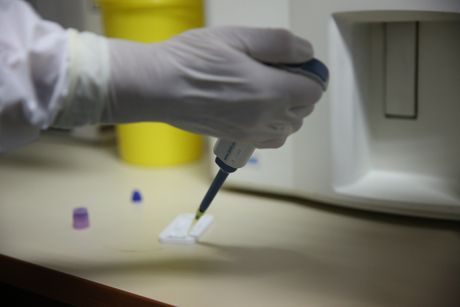Collective immunity study: Instead of 7,000 families, only 1,000 people tested, here's why
People are reluctant to participate, more concrete results expected in two weeks

A study examining collective immunity to coronavirus in Serbia has been a debacle. Instead of testing 7,000 households, i.e. 17,000 people older than 7, by the end of June, over about a month and a half, only 1,000 citizens were tested for antibodies. The results showed that 6.4 percent of the population has immunity, which corresponds to the number of about 448,000 people.
After the first family was tested on May 11, Tatjana Pekmezovic, professor and vice dean at the Medical Faculty in Belgrade who is the leader of the study and the director of the Institute of Epidemiology, said that the plan had been to sample 7,000 families by the end of June.
At that time, she also said that the response of the citizens was satisfactory, however, the data on the number of those tested shows that there weren't many willing to participate in this research.
Professor Doctor Pekmezovic told the daily Blic - which published the results of the study more than a week ago - that in this phase, which she calls the initial one (although this was not mentioned earlier), about 1,000 respondents were included, and that the study will be continued in the same way, through institutes of public health throughout the country, which will be coordinated by the Batut Institute.
The study is going very slowly
According to her, the first phase of the study has been completed successfully, and a percentage of 6.4 percent shows a value similar to most European countries.
"We did a sample of the general population and using the ELISA test that is not a rapid serological tests, but shows the presence and amount of antibodies. Methodologically, this is the most correct. In Belgium, that percentage is 6 percent, in Denmark 2.4. In Spain, a similar methodology was used as in our country, and they have a prevalence of seropositivity of 5 percent. In Switzerland, the percentage of the population that has antibodies to SARS-Cov-2 (coronavirus) is between 5 and 11 percent, and they used the same sample and methodology as us," said Pekmezovic.
She told Telegraf.rs that the study continues in the same way, but that it is going very slowly.
"The study continues in the same way. We are waiting for additional funds. It's going very slowly. You can see what the situation is like. People are very reluctant to come," Professor Doctor Pekmezovic told Telegraf.rs.
Asked whether this reluctance is the main reason why 7,000 families have not been tested, but only 1,000 people instead, she replied affirmatively and added:
"We will have more concrete results in two weeks when everything should be over," she told our portal.
More antibodies in those under 20
Otherwise, the study so far shows that men have antibodies in 8.1 percent of cases, and women in 5 percent. Antibodies are most often present in the population younger than 20 years, and less often in those over 80 years of age.
The highest percentage of citizens with developed immunity is in Sumadija and in Western Serbia, where it stands at 7.2 percent, while it has reached 7 percent in Belgrade, and 5.6 percent in Southern and Eastern Serbia. The percentage is the lowest in Vojvodina, where it is 3.1 percent.
Video: The first Serbian test for coronavirus has been produced in Nis
(LJ.R. - lj.racic@telegraf.rs)
Telegraf.rs zadržava sva prava nad sadržajem. Za preuzimanje sadržaja pogledajte uputstva na stranici Uslovi korišćenja.




